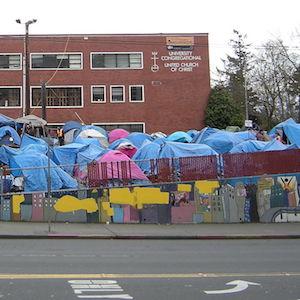For the vast majority of people who live in the developed world, infectious disease is an afterthought.
Sure, we still catch colds and (if we're old or immunocompromised) can die of influenza, pneumonia, or food poisoning. Antibiotic resistance is scary -- and directly responsible for about 23,000 deaths in the U.S. each year -- but it hasn't quite become the apocalypse we all feared. In general, the microbial world is just not something the average person has to think about very much.
That luxury of modern life is due to the strong defense provided by the "pillars" of our public health system. According to Dr. Michael Osterholm, these pillars include chlorination (of the water supply), vaccination, and pasteurization (of dairy and other products). We could also add medication (i.e., antibiotics and other antimicrobials) to this list. If just one of these pillars is taken away, we can fully expect bad things to happen. Outbreaks of vaccine-preventable illnesses like measles serve as a case-in-point.
Nowhere is the breakdown of public health more obvious than in "tent cities" and other locations where homeless people live. In San Diego, an ongoing outbreak of hepatitis A among the homeless has already hospitalized nearly 300 people and taken the lives of 16.
Homeless Camps Are Infectious Disease Time Bombs
Though homelessness is actually decreasing across the country, many cities are struggling with a growing problem. Because addiction and/or mental illness are the root causes in a substantial number of homeless cases, it is vitally important for homeless people to receive appropriate treatment. However, this is complicated by the fact that many of them are unwilling or unable to receive proper medical care.
This raises the thorny issue of involuntary commitment. If a person is incapable of taking care of himself, should society force this person into a treatment facility against his will? The law already allows for this, but the bar is set pretty high. The issue we must address, therefore, is whether it is time to lower the bar. For instance, many states are considering legalizing involuntary commitment for drug addicts.
Most Americans are rightly squeamish about forcing people to do anything against their will. But allowing homeless people to do whatever they want is no longer a viable solution. When a community fails to practice proper hygiene and sanitation, it becomes a ticking time bomb for infectious disease. The San Diego hepatitis A outbreak isn't the only example.
Recently, a deadly strain of Streptococcus killed three homeless people in Anchorage. Shigella, a nasty foodborne illness that causes bloody diarrhea, spread among Portland's homeless in 2015. Homelessness is also linked to tuberculosis.
Outbreaks demonstrate that the squalor within which many homeless people live poses a threat not only to them but to society as a whole. Doing nothing is no longer acceptable. It is dangerous, costly, and inhumane.




